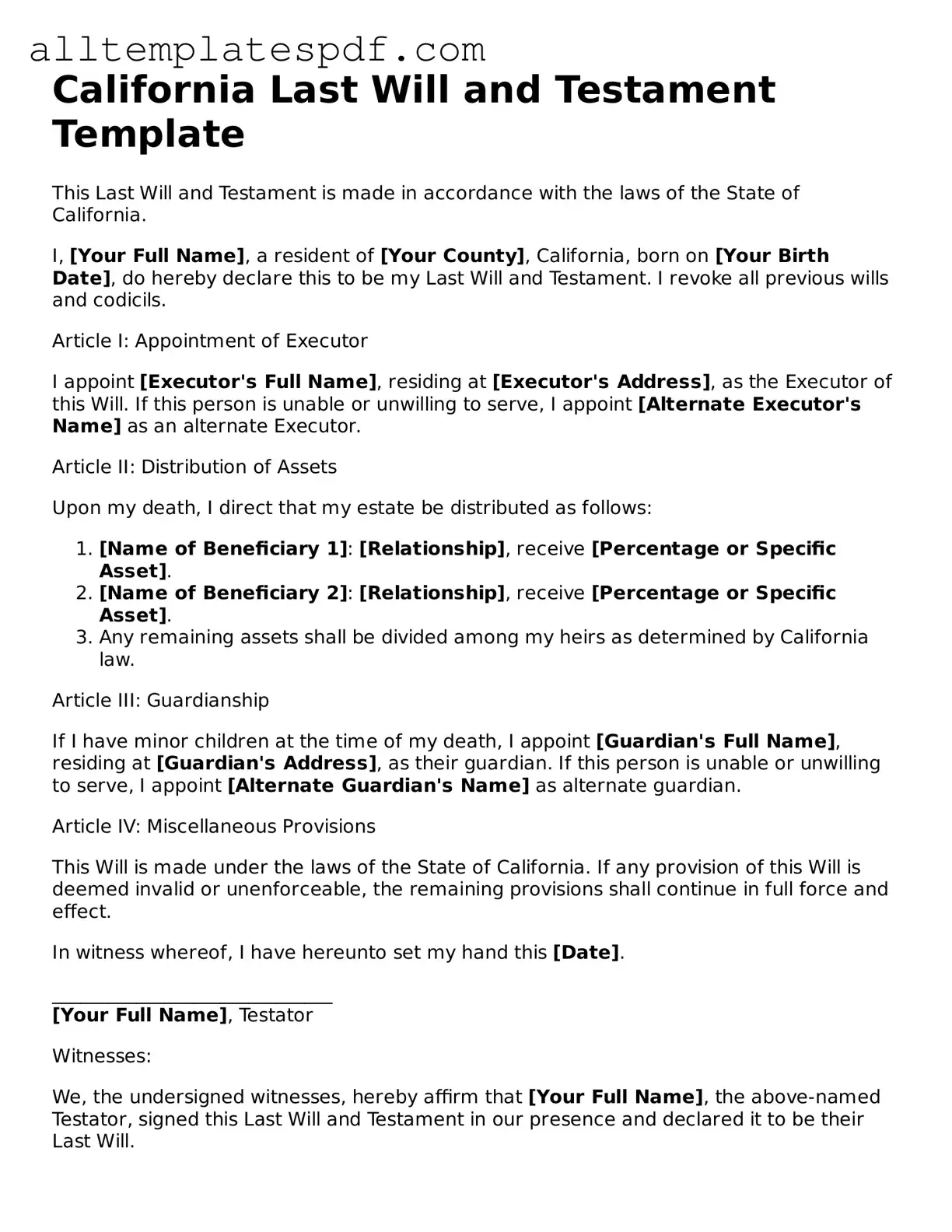Filling out a Last Will and Testament form can be a daunting task. Many people make mistakes that can lead to confusion or even legal disputes down the line. One common error is failing to properly identify beneficiaries. When individuals do not clearly specify who will inherit their assets, it can create uncertainty and conflict among family members. It's crucial to use full names and, if possible, include relationships to avoid any ambiguity.
Another frequent mistake is neglecting to sign the document correctly. In California, a will must be signed by the person creating it, known as the testator. If the signature is missing or improperly placed, the will may not hold up in court. Additionally, witnesses play a vital role. California law requires at least two witnesses to be present when the will is signed. If witnesses do not sign, or if they are not of legal age or mental capacity, the will could be deemed invalid.
Some people also overlook the importance of updating their will. Life circumstances change, such as marriages, divorces, or the birth of children. Failing to revise the will to reflect these changes can lead to outdated provisions that no longer align with one’s wishes. Regularly reviewing and updating the document ensures that it accurately reflects current intentions.
Another mistake involves not considering the implications of specific bequests. While it may seem straightforward to leave a particular item to someone, it’s essential to clarify what happens if that item is no longer available at the time of death. Without clear instructions, heirs may face disputes over who should receive what, leading to potential legal battles.
Some individuals forget to include a residuary clause. This clause addresses what happens to any remaining assets not explicitly mentioned in the will. Without it, those assets may be distributed according to state law, which may not align with the deceased’s wishes. Including this clause helps ensure that all assets are accounted for and distributed according to the testator's intent.
Additionally, people sometimes underestimate the importance of legal language. While the California Last Will and Testament form is designed to be user-friendly, using vague or unclear language can lead to misinterpretation. It’s important to be as specific as possible when outlining wishes to avoid confusion or disputes among beneficiaries.
Lastly, individuals may forget to store the will in a safe and accessible place. Even the best-drafted will is ineffective if it cannot be found after the testator's death. Keeping the document in a secure location, such as a safe deposit box or with a trusted attorney, ensures that it can be easily located when needed.
